Operation Spiderweb: How Ukraine pulled off the unthinkable
Ukraine has shocked the world after spending 18 months organising a surprise attack on Russia that nobody saw coming.
Massive over-the-horizon radars. Interceptors capable of flying 3000km/h. Hundreds of fighter jets. Dozens of missile batteries. Highly mobile, anti-aircraft tanks.
But Russia’s trillion-dollar defence infrastructure could not do anything about a few truckloads of wi-fi connected toy drones.
“Enemy strategic bombers are burning en masse in Russia,” Ukraine’s Security Service has declared.
It’s a devastating blow for the Kremlin.
It’s a daring display of resistance by Kyiv.
And the broad-daylight raid may have cost Russia a significant portion of their nuclear “mutually-assured destruction” force.
Ukraine claims attacks on four military airfields as far as 4000km from the war zone have cost Russia 41 combat aircraft - chief among them being highly prized cruise-missile-carrying strategic bombers.
There are also unconfirmed reports that the Northern Fleet Headquarters in Murmansk - home of Russia’s cruise-missile armed nuclear submarines - has also been hit.

Military analysts say it is one of the most significant raids in modern warfare.
It is clear evidence that the world’s militaries can do little to protect exorbitant expensive combat jets - such as Australia’s $16 billion worth of 72 F-35 Lightning stealth fighters - against commercially available drones costing just a few thousand dollars each.
But the full impact of the strikes is yet to be seen.
The Kremlin had hoped to enter ceasefire talks later today on a high after one of its own largest attacks of the war. A record 472 drones and dozens of missiles were sent to attack Ukrainian cities on Saturday night.
But the loss of its prized strategic bombers has cast a whole new light on today’s Istanbul peace talks.
It’s also turned decades of military thinking on its head.
“It’s actually having an effect on how the US is thinking about investments in the future,” says Professor Mai’a Cross of Boston’s Northeastern University.
“Instead of these huge, expensive projects, like the F-35 (stealth fighter), you have these relatively cheap fleets of drones that are able to destroy a whole line of Russian tanks. That has changed how many countries think about the future of security.”

Operation Pavutyna (Spiderweb)
“Of course, not everything can be revealed at this moment, but these are Ukrainian actions that will undoubtedly be in history books,” Ukrainian President Vladimir Zelensky said in an overnight post on X.
“Ukraine is defending itself, and rightly so — we are doing everything to make Russia feel the need to end this war. Russia started this war, Russia must end it. Glory to Ukraine!”
President Zelensky says the clandestine operation was 18 months in the making.
Truckloads of small disposable drones were slipped across Russian borders to staging points across the country. These were then armed with explosives and programmed to locate particular targets. Then they were hidden in timber pallets placed on the back of trucks before being driven within range of their targets.
Kyiv says their ability to connect with local commercial telephone and wi-fi networks allowed the special forces agents to escape up to a day before the remote-controlled attack was unleashed.
Up to 150 drones and 300 grenade-sized explosives were reportedly used in the attack.
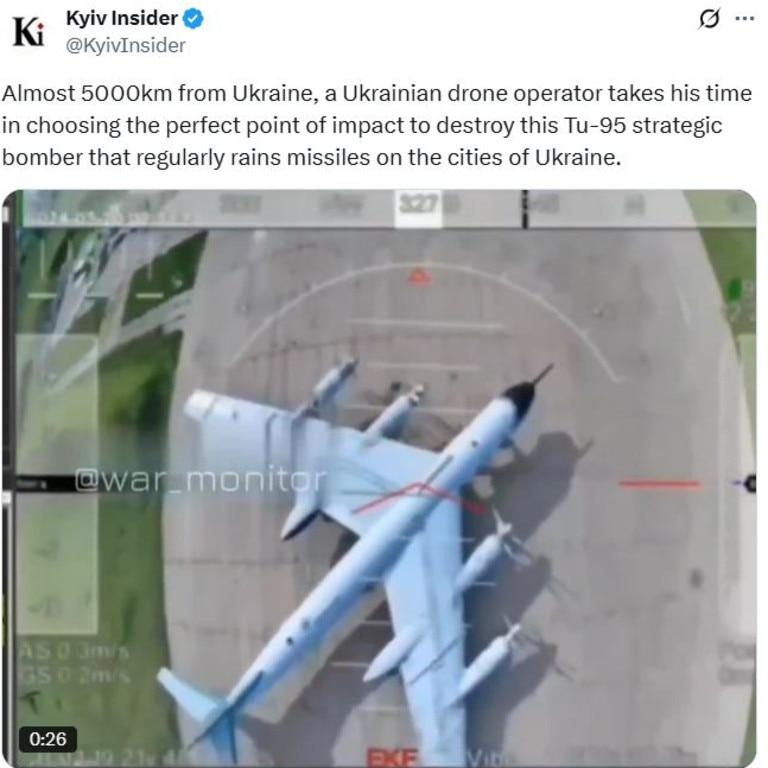
Russian military blogger Sergey Kolyasnikov claims some of the drones had been intercepted.
“We found a warehouse where containers with drones were collected, Chelyabinsk, Sverdlovsk,” he posted to Telegram. “It was rented for 350,000 rubles ($6,500). That’s why the truck in the Amur region had Chelyabinsk license plates – they were leaving from there.”
The quadcopters were assembled in Russia before being loaded in pallets and concealed in the back of lorries.
“At the right moment, the roofs of the (pallet-huts) were remotely opened, and the drones flew to hit Russian bombers,” an anonymous official told AP.
Russia’s governor of Siberia’s Irkutsk district, Igor Kobzev, posted a video showing drones flying overhead as a plume of smoke grew in the distance.
“It is known that this was a drone attack on a military unit in the village of Sredniy,” he stated on Telegram.
“The source from which the drones were launched has already been blocked. It’s a truck. The main thing is not to panic. There is no threat to the lives and health of civilians.”
Another witness described the same attack: “I work at a tyre shop,” one Telegram post reads. “A truck pulled in, and drones flew out of it.”

A new way of war
“FPV drones are about tactical dominance,” one Russian military analyst has commented since the attack.
“They bring chaos, fear and uncertainty to close combat. They are not feared. They are hated. They are cheap, massive and deadly effective. And their potential grows with each passing day: AI guidance, automated launches, swarms. These are no longer makeshift weapons, but new close-combat artillery.”
It’s not a new claim.
What is new is the physical demonstration of the extent to which this is new.
Russian President Vladimir Putin was promised by his generals that his February 2022 invasion of Ukraine would last just three days. Three years - and several purges of top generals - later, the fighting continues.
That’s largely due to Ukraine’s rapid recognition of the power of drones.
And its equally rapid development of an emergency war drone production line.
“Even though Ukraine is experiencing a number of setbacks at the moment, the way in which it has made its overall military capability and production of drones so efficient is absolutely remarkable,” says Professor Cross.
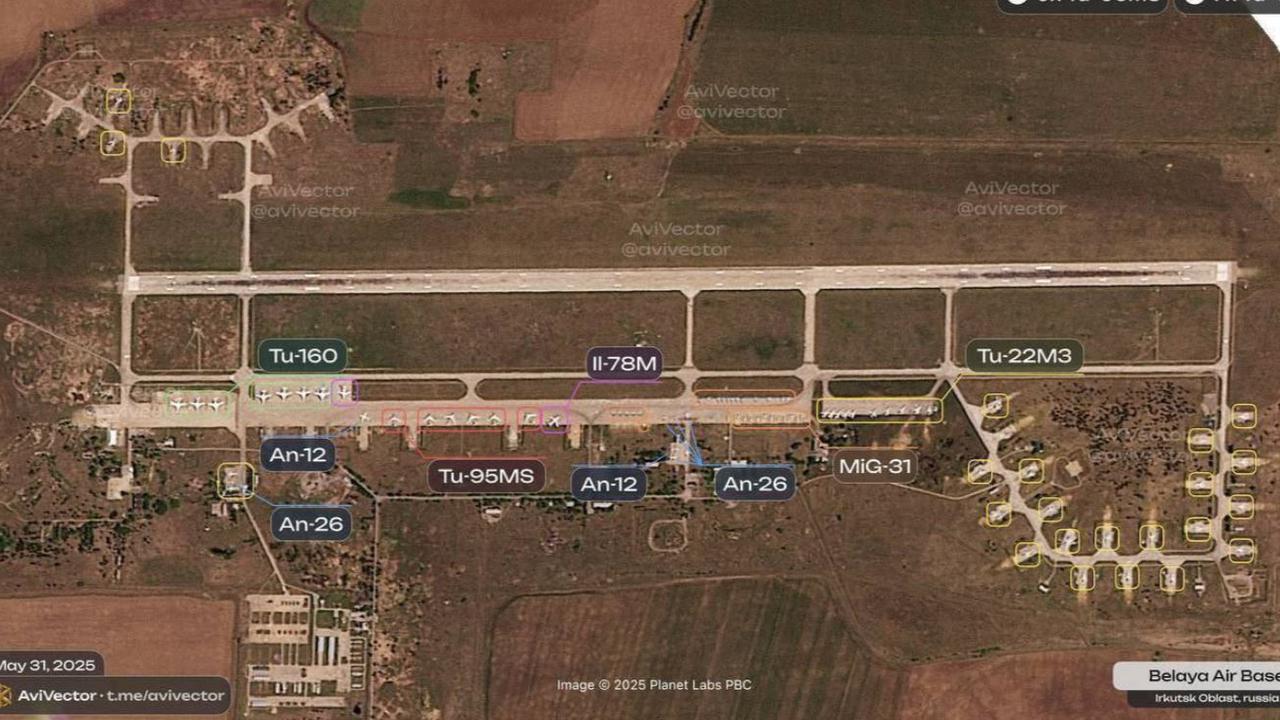
“What we’re seeing is the sheer ingenuity of those on the front lines in dealing with a weaponry shortfall, and innovating in a way that is really quite unprecedented.”
And the drones are proving to be much cheaper and quicker to produce than advanced artillery shells or precision-guided missiles.
Some specialist varieties are built in backyard factories from about $15,000 of imported electrical components and motors. Frames and fairings are 3D printed. As are adaptors to turn grenades into bomblets.
But many are the same $2000 hobbyist quadcopter drones you can find on the shelves of local electrical stores. Troops simply strap explosives on them and fly them directly into enemy bunkers, trenches, warehouses, tanks, trucks … anywhere.
They’re making it difficult to step out into the open on the battlefield. And equally difficult to hide.
However, their innocuous nature and small size are huge assets for special operations forces. The ability to conceal, move and deploy mass drone attacks will unsettle commanders of largely open-air military facilities from Australia’s main F-35 base at RAAF Williamtown in New South Wales to Nellis Air Force Base in Nevada.
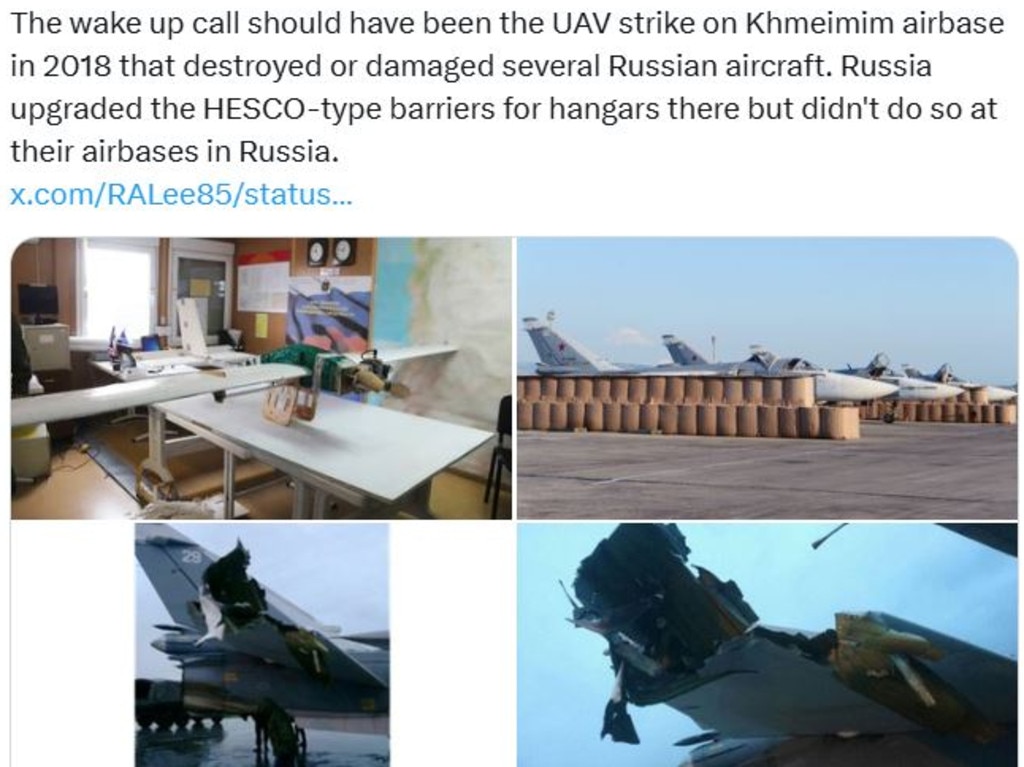
Deep strike
“Russian strategic bombers, all burning delightfully,” the Head of the Security Service of Ukraine (SBU), Lieutenant General Vasily Maliuk, comments in footage released about the attack.
One attack - on the Olenya airfield in Murmansk - has apparently proved particularly successful.
“The driver’s running around...drones are flying from his truck toward the base,” one Russian observer posted.
Dozens of strategic bombers had deployed to the facility in preparation for Saturday night’s attacks on Ukrainian cities. These had reportedly returned and were lined up on the airfield for refuelling and rearming.
Russia is generally believed to have less than 90 operational strategic bombers. These include the ungainly Tu-95 “Bear” four-engined turboprop, which entered service in 1952. The Tu-22M “Backfire” swing-wing bomber began operations in 1962. And Only a handful of the more modern Tu-160 “Blackjack” heavy strategic bombers (built in the late 1980s) remain in service.
All are designed to carry nuclear-capable cruise missiles.
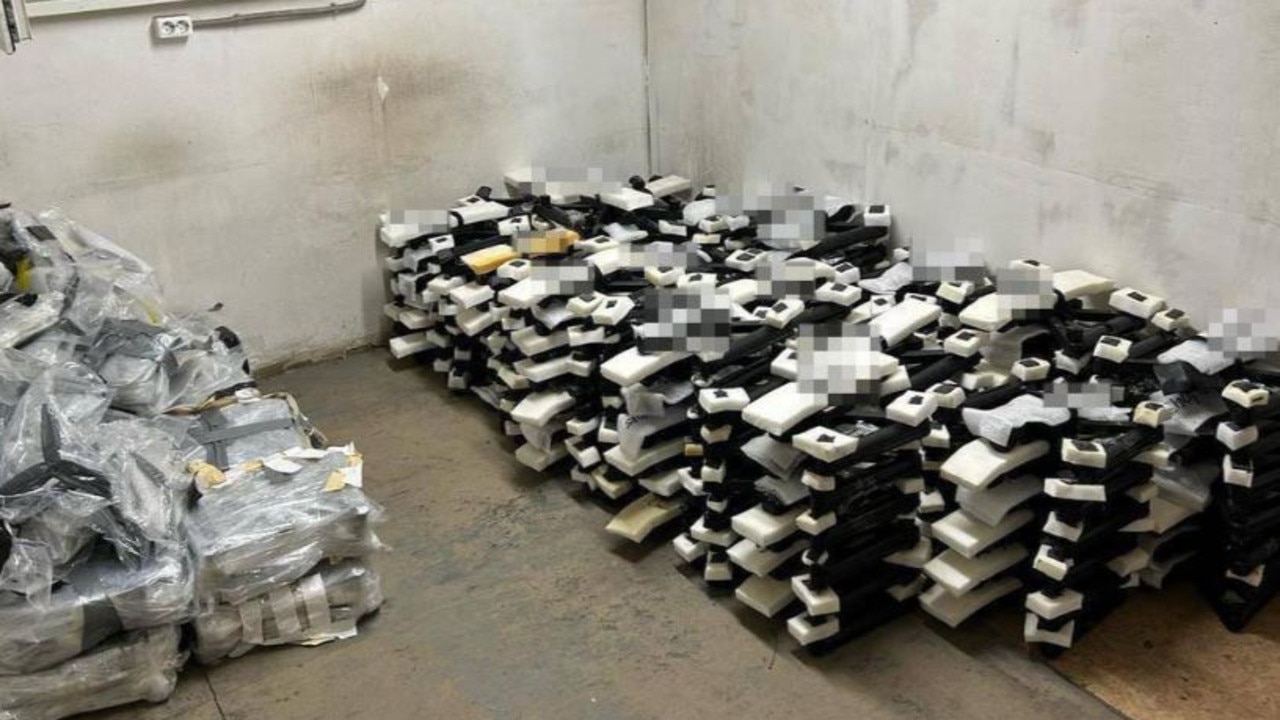
All have been extensively used - carrying conventional explosive missiles - against Ukraine.
Ukraine’s counter-intelligence agency, the SBU, has stated on Telegram, that “34 per cent of strategic cruise missile carriers at the main airfields of the Russian Federation were hit.”
Also among the destroyed were A-50 surveillance aircraft.
It is Russia’s equivalent to the US E3 Sentry and Australian E-7A Wedgetail airborne early warning and control (AWAC) jets.
Such aircraft have been high-priority targets since the onset of the war.
Yesterday’s raids included four airfields. Dyagilevo Base in Riazan. IIvanovo Base in Ivanovo. Belaya Base in Irkutsk, some 4000km from Ukraine in south-eastern Siberia. And Olenya air base in Russia’s Murmansk region - 2000km north of Ukraine.
Previous successful Ukrainian drone attacks had forced Russia’s bomber fleet to seek safety in these more distant airfields.
Russia can no longer produce Tu-95 and Tu-22M bombers. Their production lines have long since been retired and dismantled. Its recently restarted Tu-160 construction facility is delivering just three new aircraft per year.

It will take Moscow years to recover from the loss.
“The strategics were not completely destroyed, but their damage is unlikely to be repaired by the Russian military-industrial complex in its current state in the near future,” Ukrainian analyst Alexander Kovalenko commented on Telegram.
Drone warriors
Almost every aspect of warfighting is being taken over by drones.
Ukrainian media reports that just one dedicated drone unit - the Birds of Magyar - launched 11,600 drone sorties (flights) in just one month, striking more than 5300 targets.
In April, Ukraine’s total drone force reportedly hit 83,000 targets.
Two-thirds involved small first-person-view (FPV) remote drones. The remaining third were heavier “bomber” drones with a degree of autonomous control.
All are specialised in destroying troop bunkers, ammunition and supply dumps, transport infrastructure - and tanks.
Drones are an alternative to heavy artillery and strike jets.
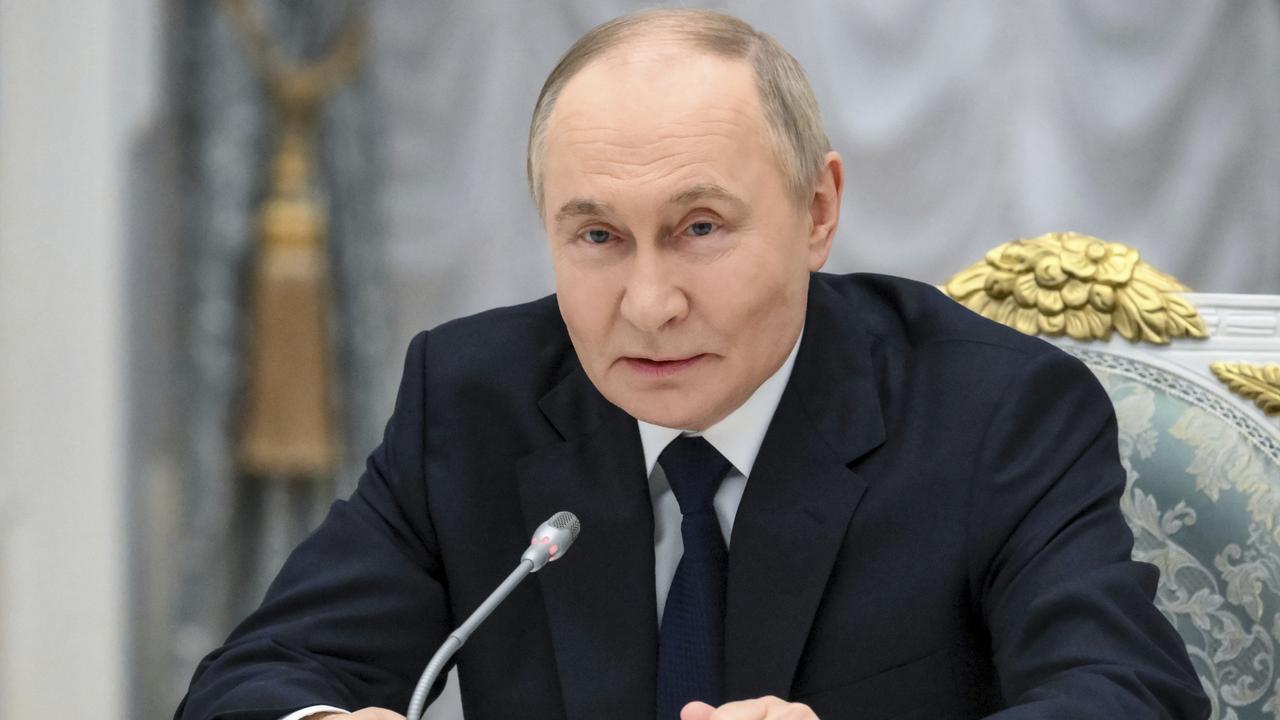
Ukraine’s drones reportedly give its front-line troops a 15km-deep “attrition zone”, where attacking Russian forces can be engaged before they come into direct contact. “Ukrainian commanders aim to hamper the logistics of Putin’s invasion force and significantly reduce the potential for future Russian advances,” says National Institute for Strategic Studies analyst Mykola Bielieskov. “This approach is being dubbed the “drone wall,” and may well come to play a far bigger role in efforts to freeze the front lines.”
Drones are an alternative to fighter jets and anti-aircraft missile systems.
“Ukraine has, for some time, been expanding its ability to knock down Russian reconnaissance drones using its own drone interceptors, thereby blinding Russian units that would otherwise direct glide bombs and ballistic missiles against targets in the Ukrainian rear,” explains Dr Jack Watling of the Royal United Services Institute (RUSI).
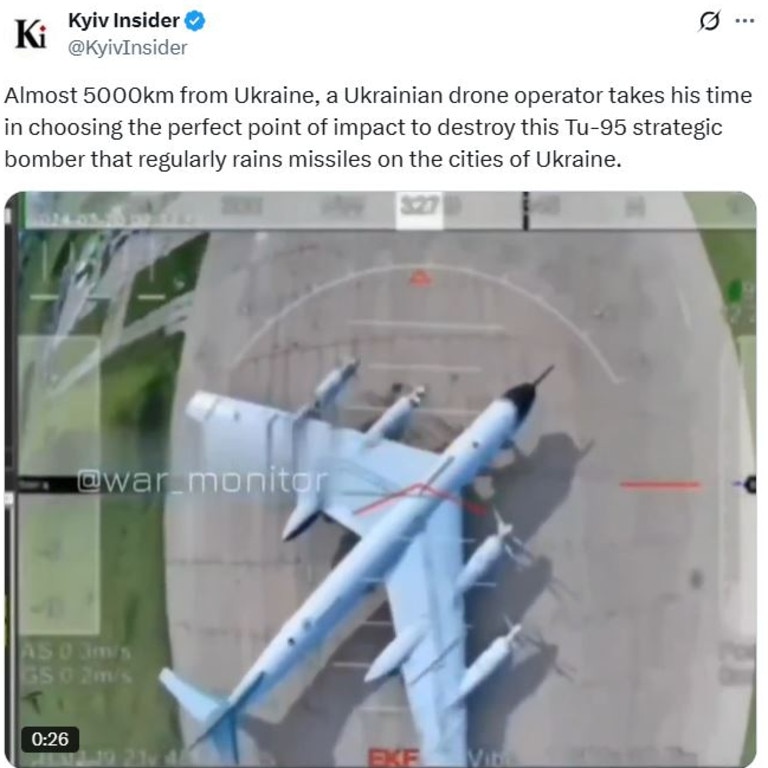
Drones are an alternative to tanks and shoulder-fired missiles
They can be flown into the vulnerable exhaust ports, open hatches and thin top armour of the battlefield behemoths. Attempts to add hoods and spikes to fend off these bite-sized attackers have proven unsuccessful.
Drones are an alternative to saboteurs.
“Imagine, on game day, containers at railyards, on Chinese-owned container ships in port or offshore, on trucks parked at random properties… spewing forth thousands of drones that sally forth and at least mission-kill the crown jewels of the USAF”, warns the Center for a New American Security (CNAS) analyst Tom Shugart.
But every action has a reaction.
“(Russia) is attacking Ukraine’s UAV pilots,” says Dr Watling. “Here the methodology is to use direction finding, signals intelligence and reconnaissance to pinpoint the location of pilots and then target them with wire-guided drones and glide bombs.”
Jamie Seidel is a freelance writer | @jamieseidel.bsky.social
Originally published as Operation Spiderweb: How Ukraine pulled off the unthinkable





